¶ Phenomenon
During the preparation and printing process, the printer experiences an issue where the heatbed cannot heat up, showing a bed temperature of zero or abnormal readings (such as around 100°C). Manually setting the bed temperature also has no response.
¶ Causes & Solutions
For the A1 mini, when the heat bed is not heating up or when the heating bed temperature is 0, it is recommended to prioritize checking whether the heat bed heating unit is functioning properly. This can be determined by measuring the resistance of the hotbed using a multimeter to identify the location of the malfunction.
¶ Tools and Materials Required
- H1.5 & H2.0 Hex Key Tool (used to loosen the screws on the baseplate)
- Tweezers (used to remove the insulation sleeve and cables)
- Multimeter
¶ Safety Warning
IMPORTANT!
It's crucial to power off the printer before performing any maintenance work on the printer and its electronics, including tool head wires, because leaving the printer on while conducting such tasks can cause a short circuit, which can lead to additional electronic damage and safety hazards.
When you perform maintenane or troubleshooting on the printer, you may be required to disassemble some parts, including the hotend. This process can expose wires and electrical components that could potentially short circuit if they come into contact with each other or with other metal or electronic components while the printer is still on. This can damage the electronics of the printer and cause further damage.
Therefore, it's essential to switch off the printer and disconnect it from the power source before doing any maintenance work. This will prevent any short circuits or damage to the printer's electronics. By doing so, you can avoid potential damage to the printer's electronic components and ensure that the maintenance work is performed safely and effectively.
If you have any concerns or questions about following this guide, open a new ticket in our Support Page and we will do our best to respond promptly and provide you with the assistance you need.
¶ Steps for Troubleshooting
¶ Step 1: First, turn off the printer's power switch and disconnect the power supply. Disassemble the bottom baseplate of the printer to expose the mainboard for measurement.
This article only provides guidelines and precautions for measuring heat bed resistance. For guidelines on removing the bottom cover and mainboard from the A1 mini, please refer to “Step 1: Remove the Baseplate” and “Step 3:Remove the Heatbed” of the “Disassembly Guide” in A1 mini Installation Tutorial.
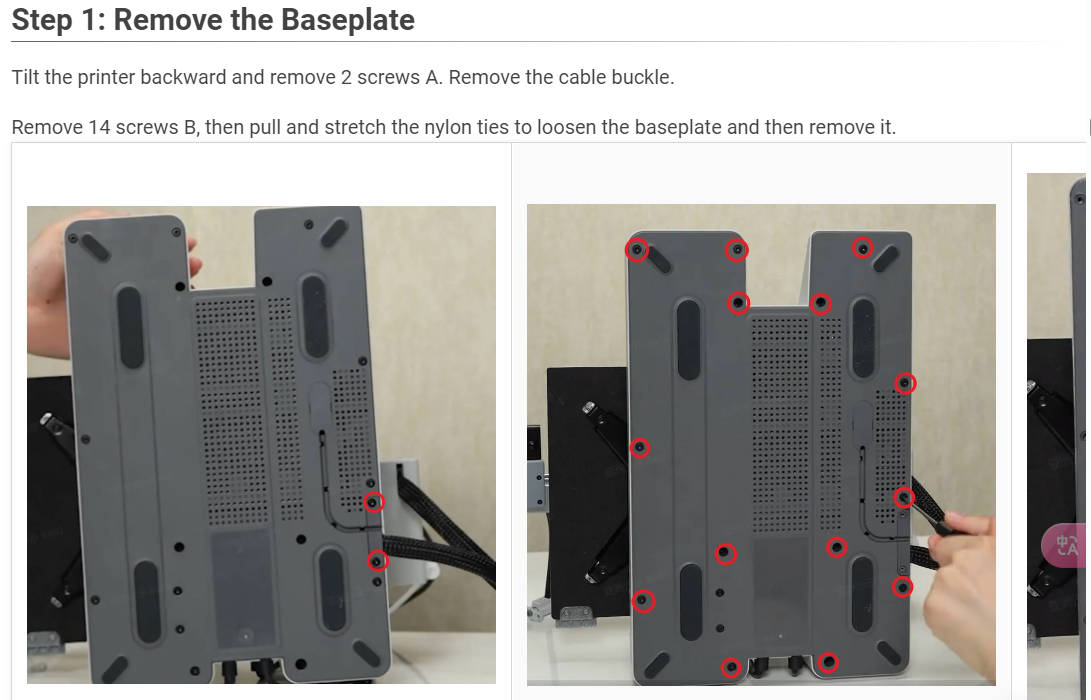 |
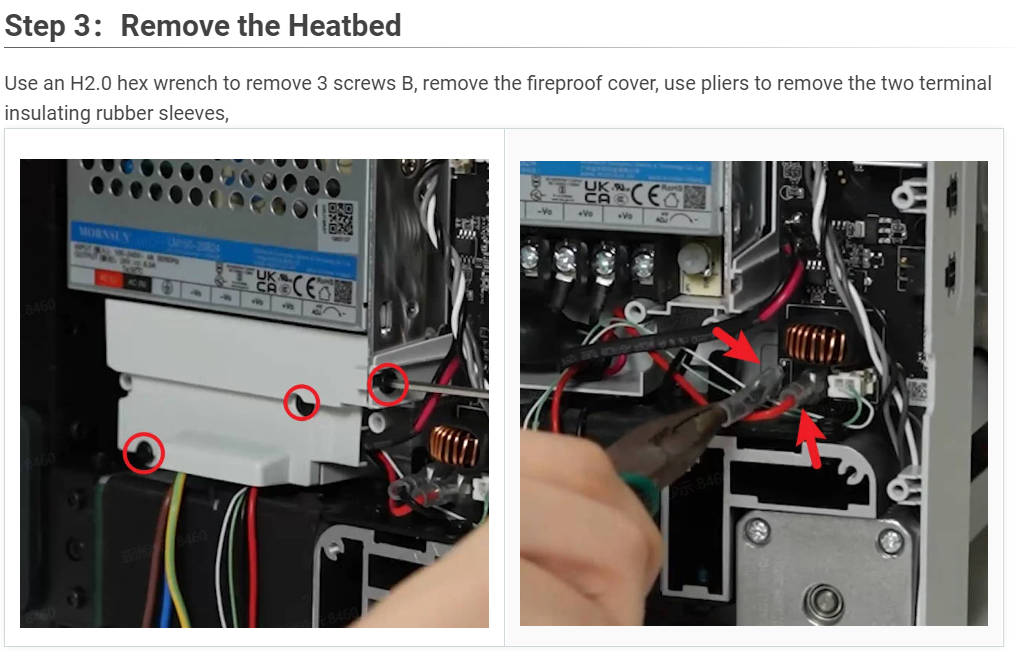 |
To ensure accurate measurement results, please be cautious not to disconnect any cables on the mainboard.
¶ Step 2: Measure the Resistance at the Power Connection Location on the Mainboard
If the resistance measured at this point is 4±0.7 Ω (it may vary with the ambient temperature, a slight deviation is acceptable, and the measured value in the graph is 4.9 Ω), it indicates that the heat bed itself and the heat bed power cables are functioning properly.
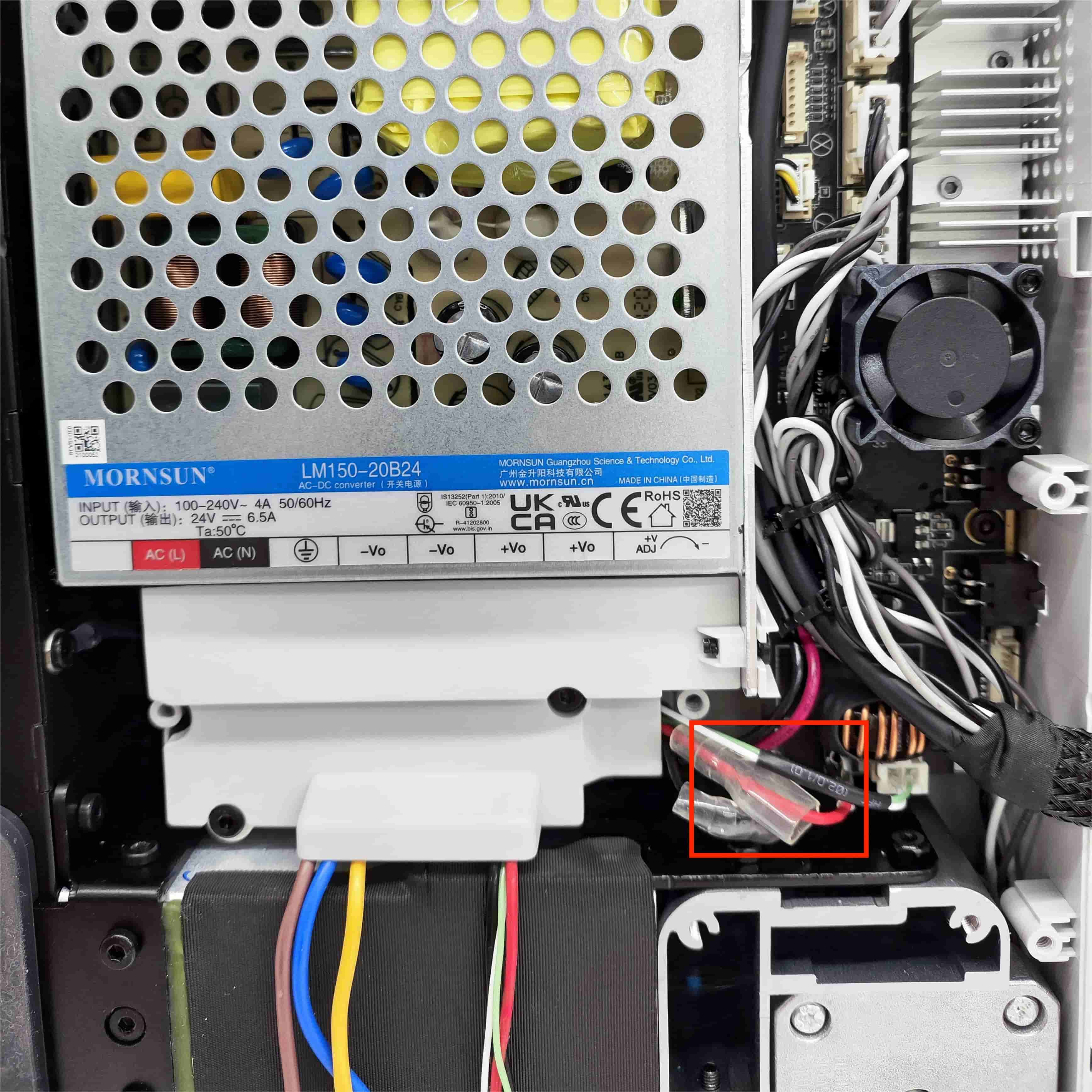 |
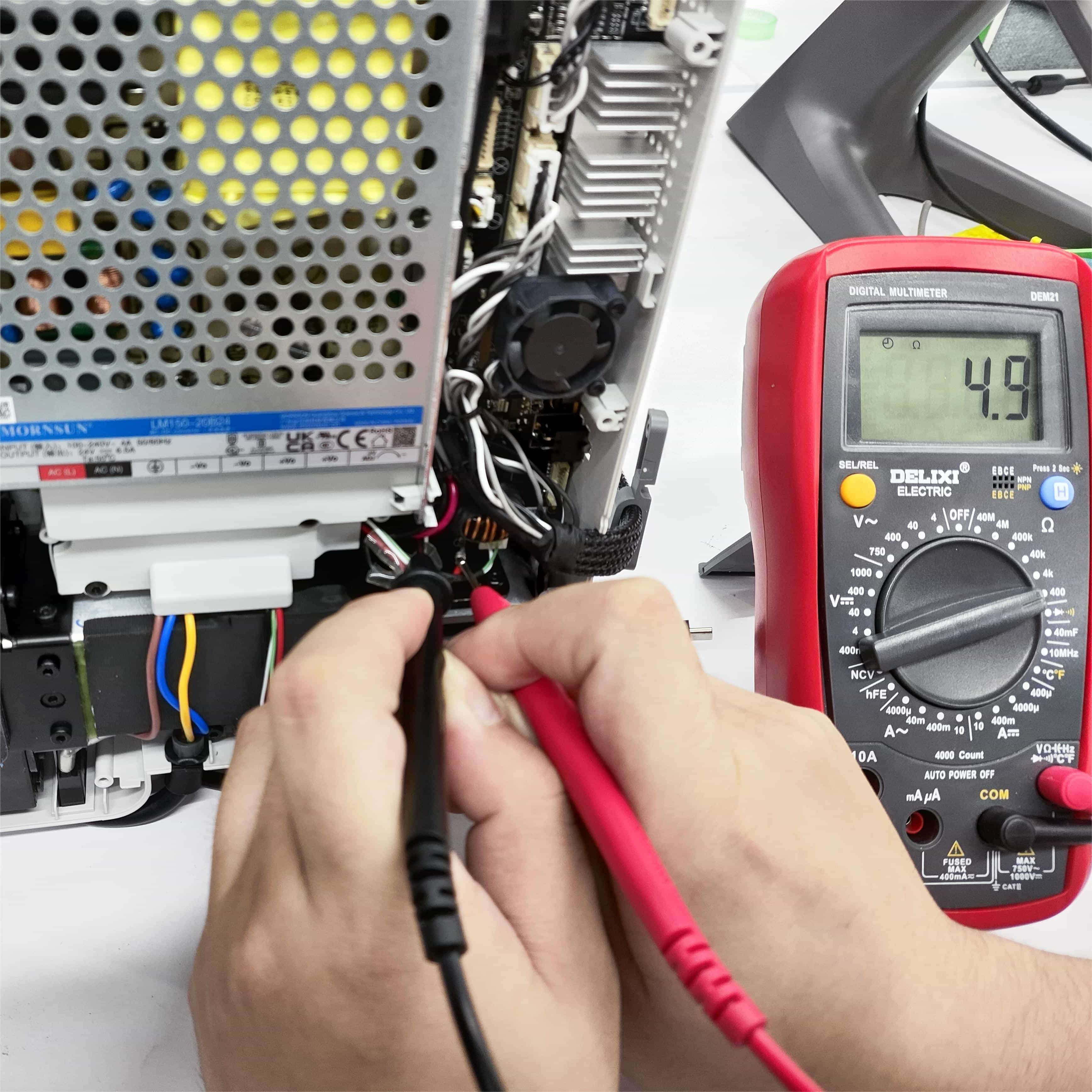 |
Important Note 1: The power connection location on the mainboard is shown in the diagram.
(This diagram is for reference purposes only to indicate the measurement points for heat bed resistance. It is not necessary to remove the mainboard from the printer during the measurement process)
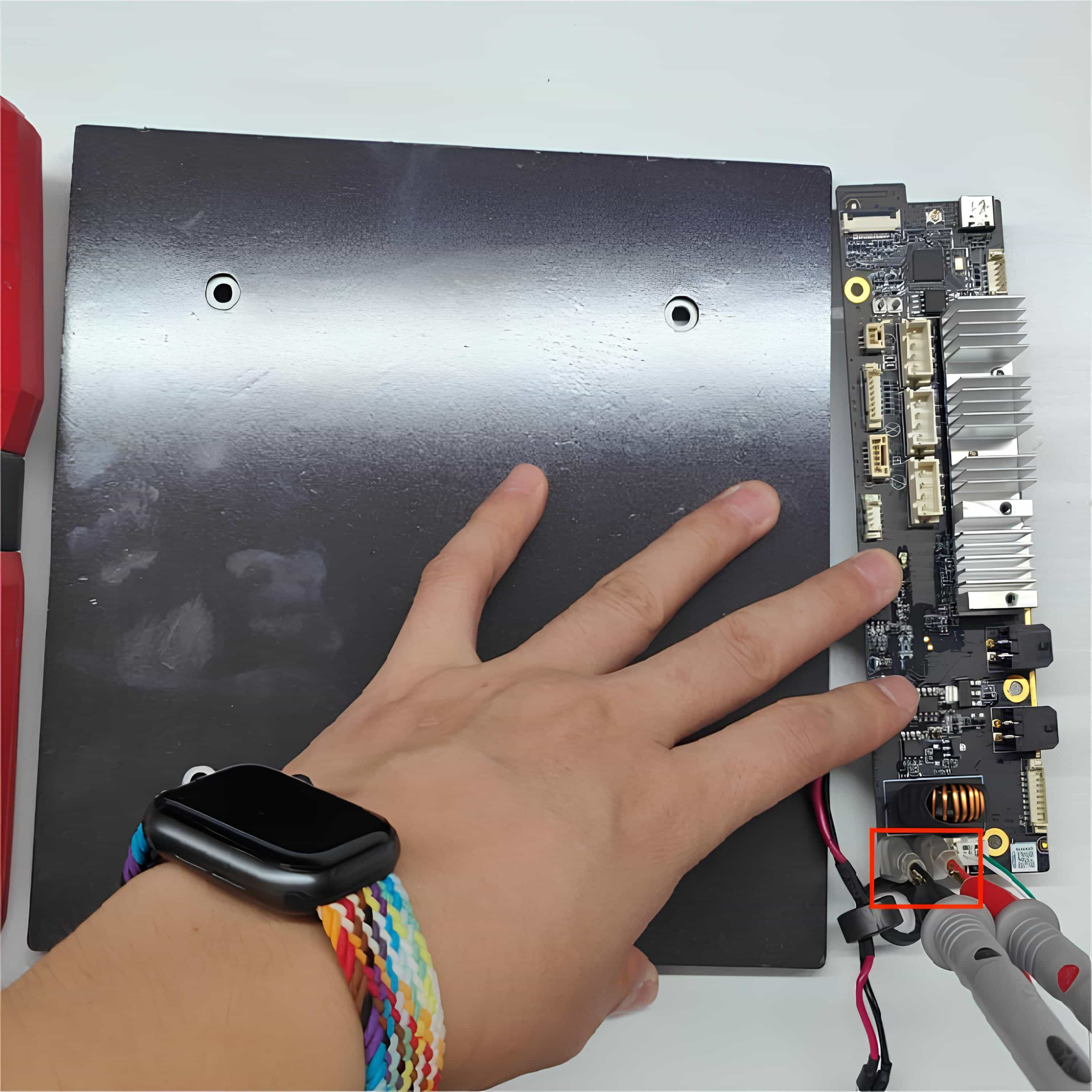
Important Note 2: For convenience during measurement, you can use tweezers to remove the insulation sleeve wrapped around the terminal block. Follow the steps shown in the diagram for this operation.
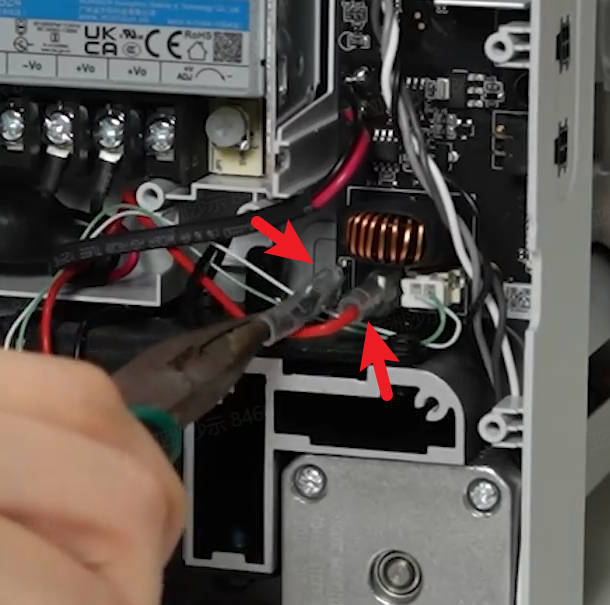
¶ Step 3: Measure the Resistance at the Temperature Sensing Connection Location on the Mainboard
If the resistance measured at this point is around 9 kΩ (it may vary with the ambient temperature, a slight deviation is acceptable, and the measured value in the graph is 7.26 kΩ), it indicates that the heat bed's NTC sensor and temperature sensing cables are functioning properly.
 |
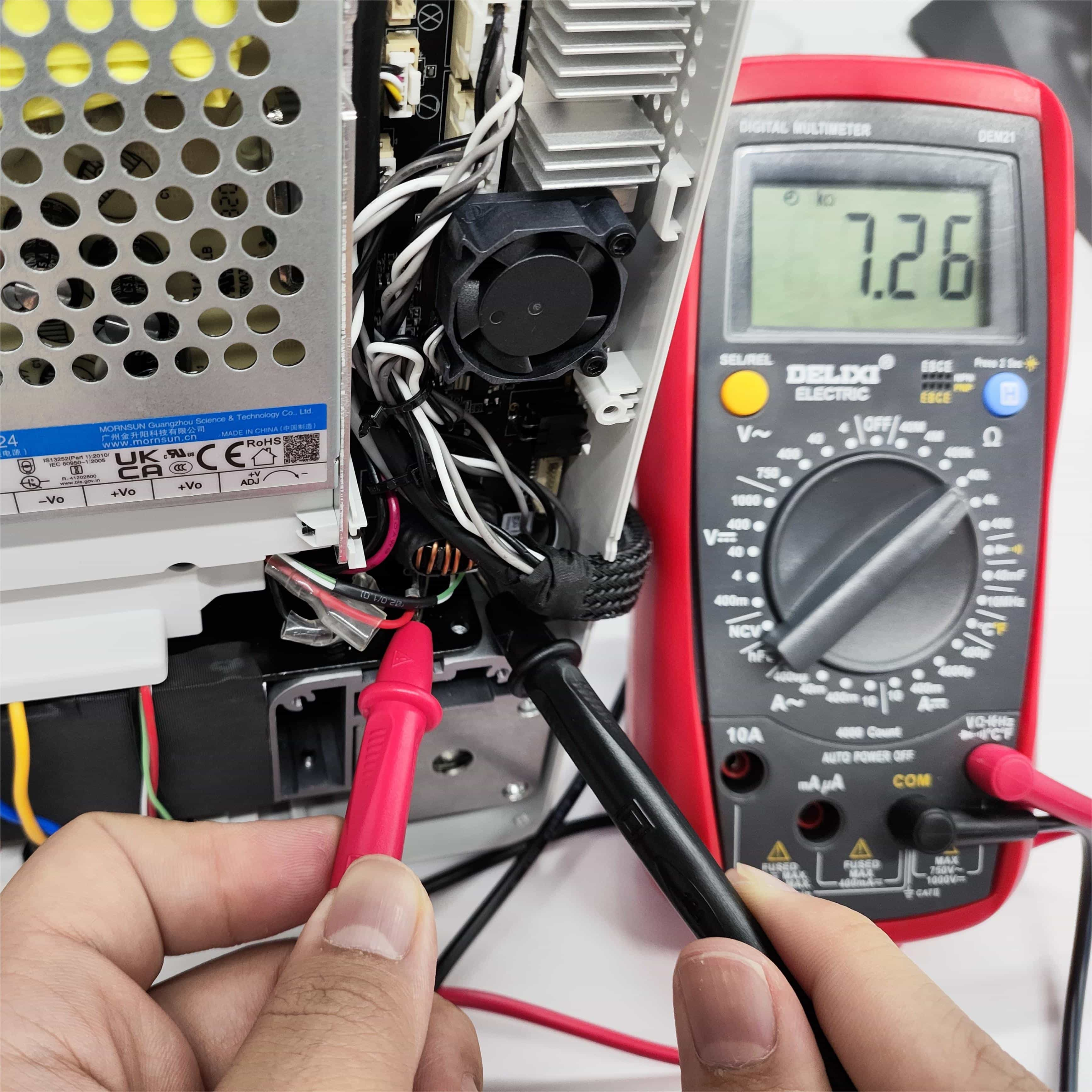 |
Important Note 1: The temperature sensing connection location on the mainboard is shown in the diagram.
(This diagram is for reference purposes only to indicate the measurement points for heat bed resistance. It is not necessary to remove the mainboard from the printer during the measurement process)
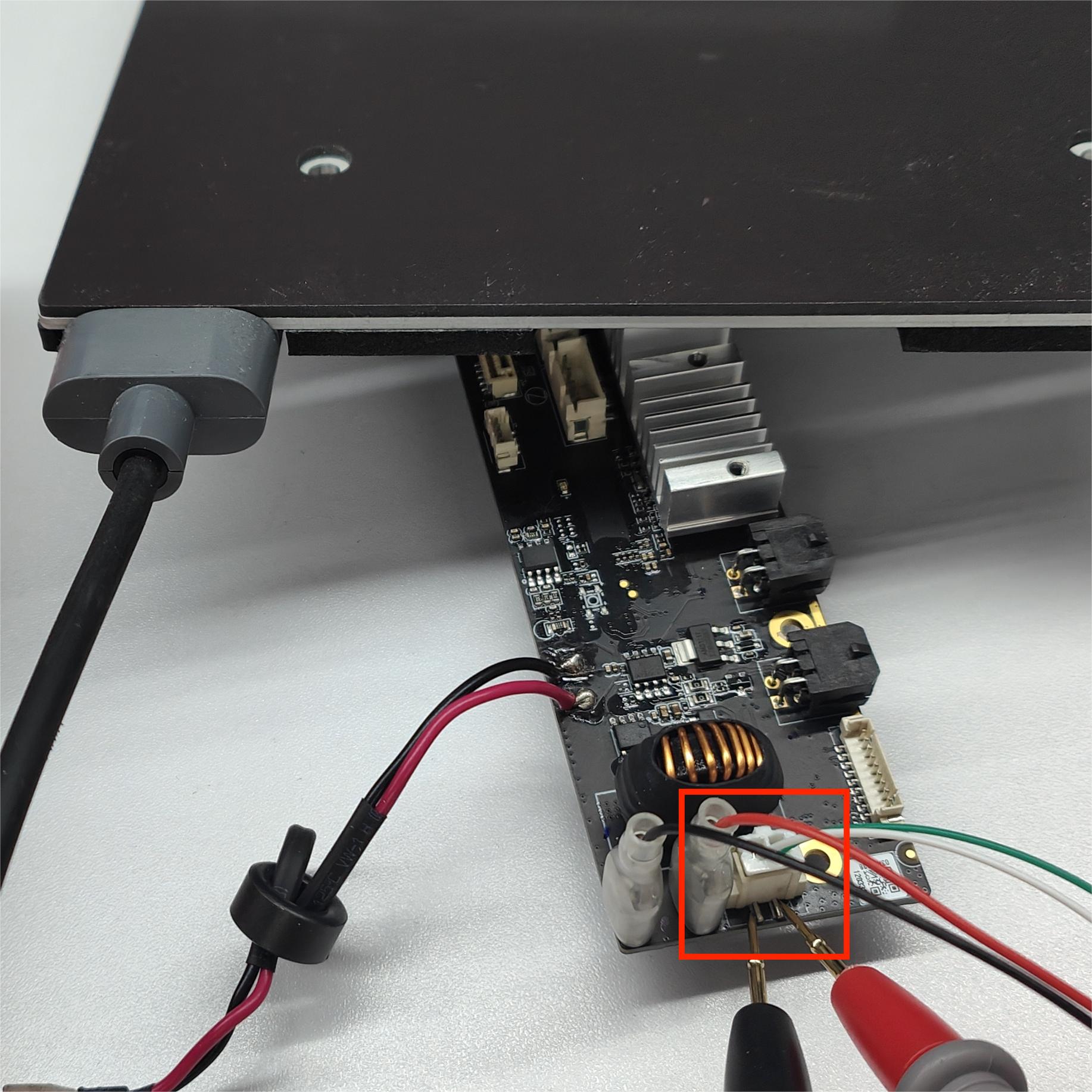
Important Note 2: Due to the limited space for measurement when the mainboard is installed, for convenience, you can temporarily disconnect the two heatbed power connection cables using tweezers. Follow the steps shown in the diagram for this operation.
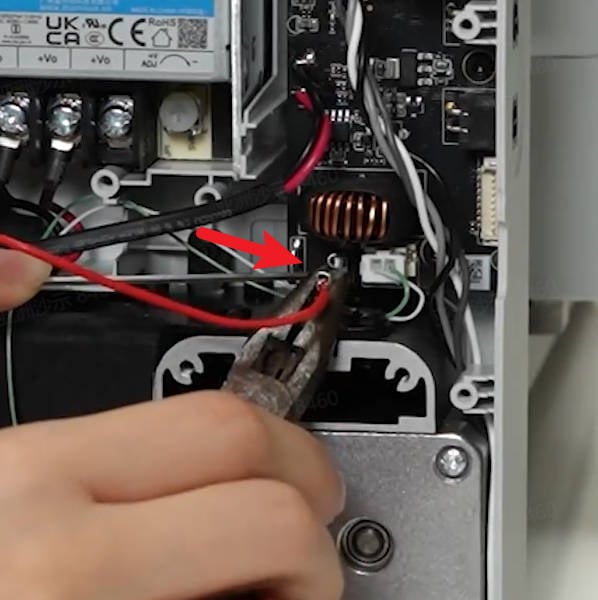
¶ Step 4: Determine if the Heat Bed is Malfunction
If both of the resistance values mentioned above are normal, it indicates that the entire heat bed assembly (aluminum bed and heating cables) is functioning properly.
In the case of abnormal heating or temperature issues with the heat bed, it is recommended to prioritize replacing the mainboard.
However, if both resistance values are abnormal, it is necessary to individually measure the resistance of the bed itself to further pinpoint the location of the issue and confirm the specific problem.
¶ Step 5: Measure the Resistance at the Power Connection Location on the Bed
If the resistance measured at this point is around 4Ω (it may vary with the ambient temperature, a slight deviation is acceptable, and the measured value in the graph is 5Ω), it indicates that the power part of the bed is functioning properly without any abnormalities.
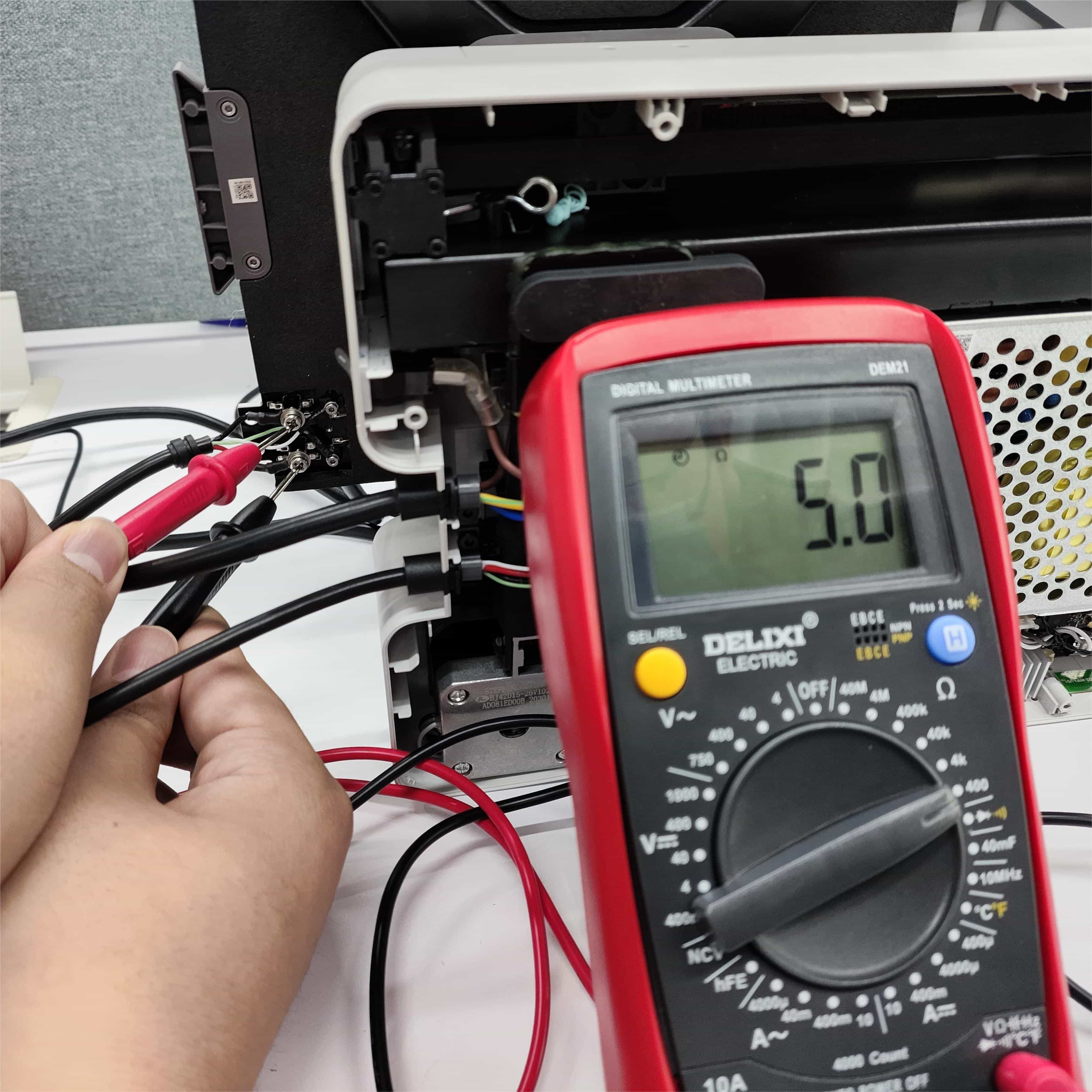
Important Note 1: For ease of measurement, manually move the hotbed to the rear of the printer and measure the power connection location on the bed as shown in the diagram.
(This diagram is for reference purposes only to indicate the measurement points for heat bed resistance. It is not necessary to remove the heat bed from the printer during the measurement process)
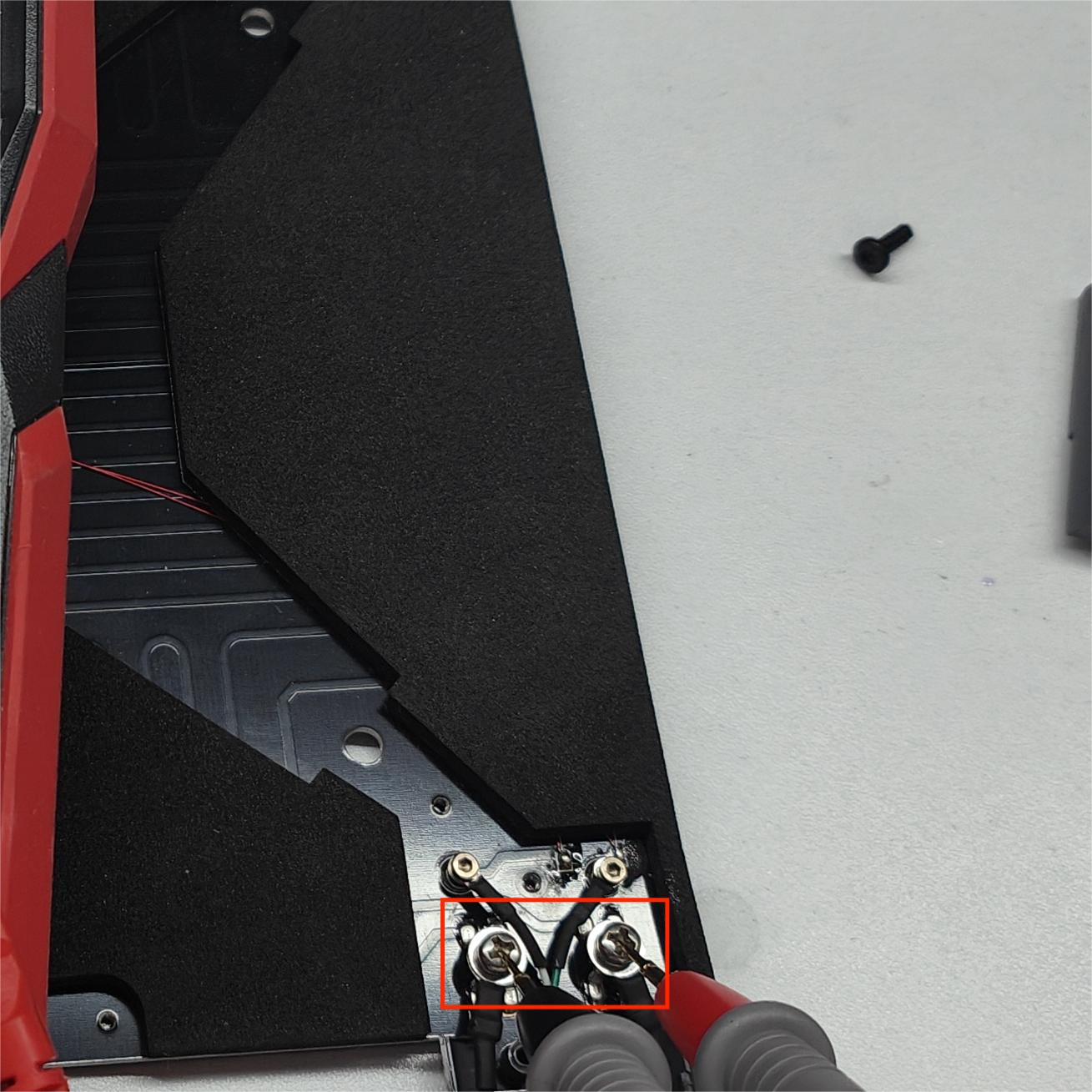
Important Note 2: This step requires removing the heat bed cable cover in advance. For guidelines on removing heat bed cable cover, please refer to “Step 2 - Remove the Heatbed Cable” of the “Disassemble the Heatbed” in A1 mini Heatbed Cable Installation Tutorial.
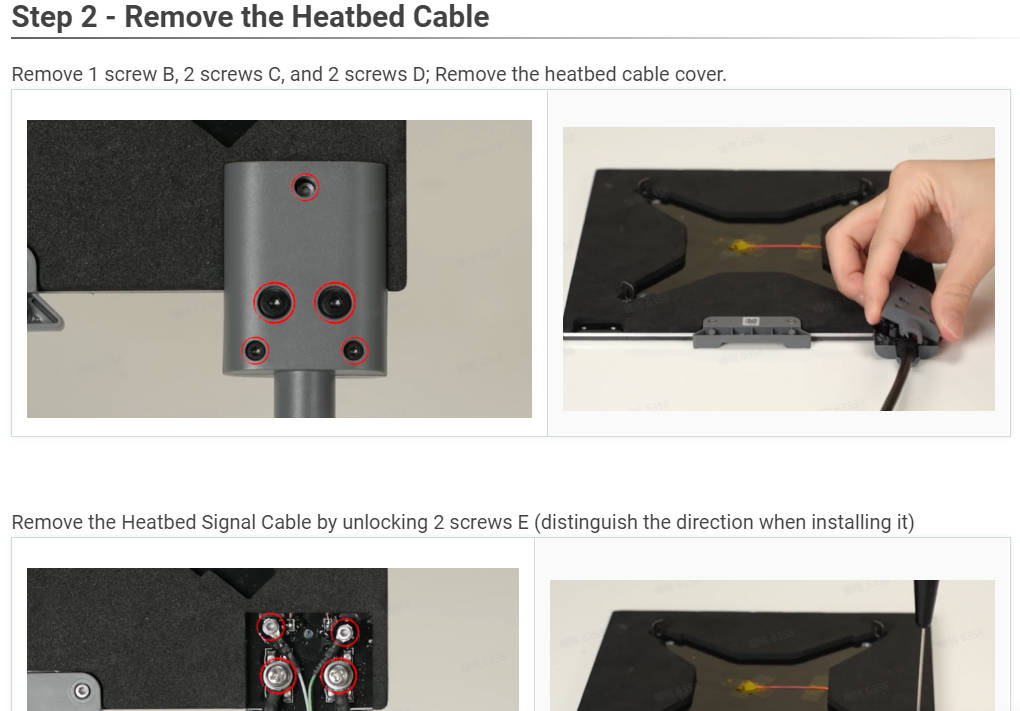
¶ Step 6: Measure the Resistance at the Temperature Sensing Connection Location on the Bed
It is required to use tweezers to disconnect the temperature sensing connection cable from the mainboard before measurement. If the resistance measured at this point is around 100kΩ (it may vary with the ambient temperature, a slight deviation is acceptable, and the measured value in the graph is 113.3 kΩ), it indicates that the NTC sensor of the heat bed is functioning properly without any abnormalities.
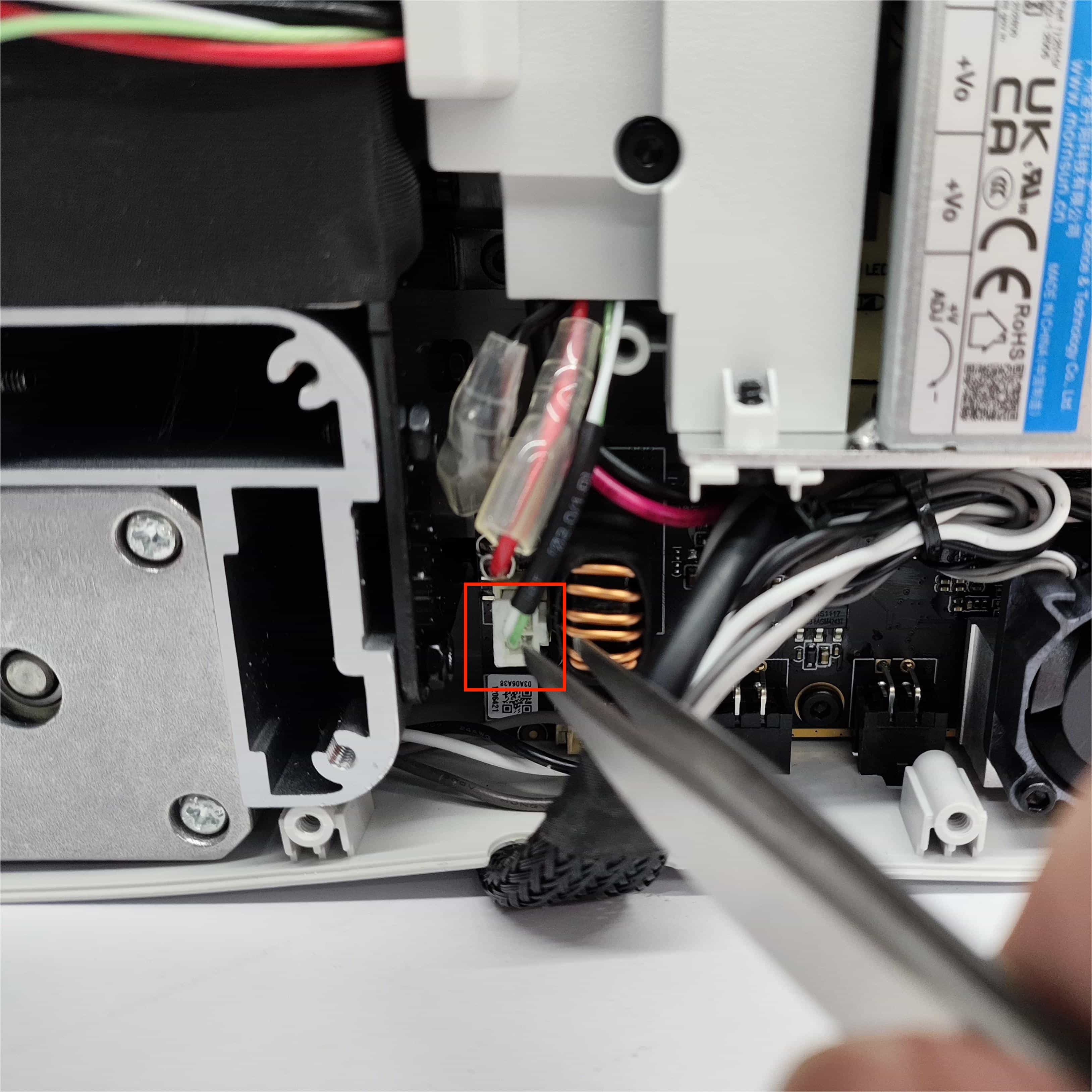 |
 |
Important Note: The temperature sensing connection location on the bed is shown in the diagram.
(This diagram is for reference purposes only to indicate the measurement points for heat bed resistance. It is not necessary to remove the heat bed from the printer during the measurement process)
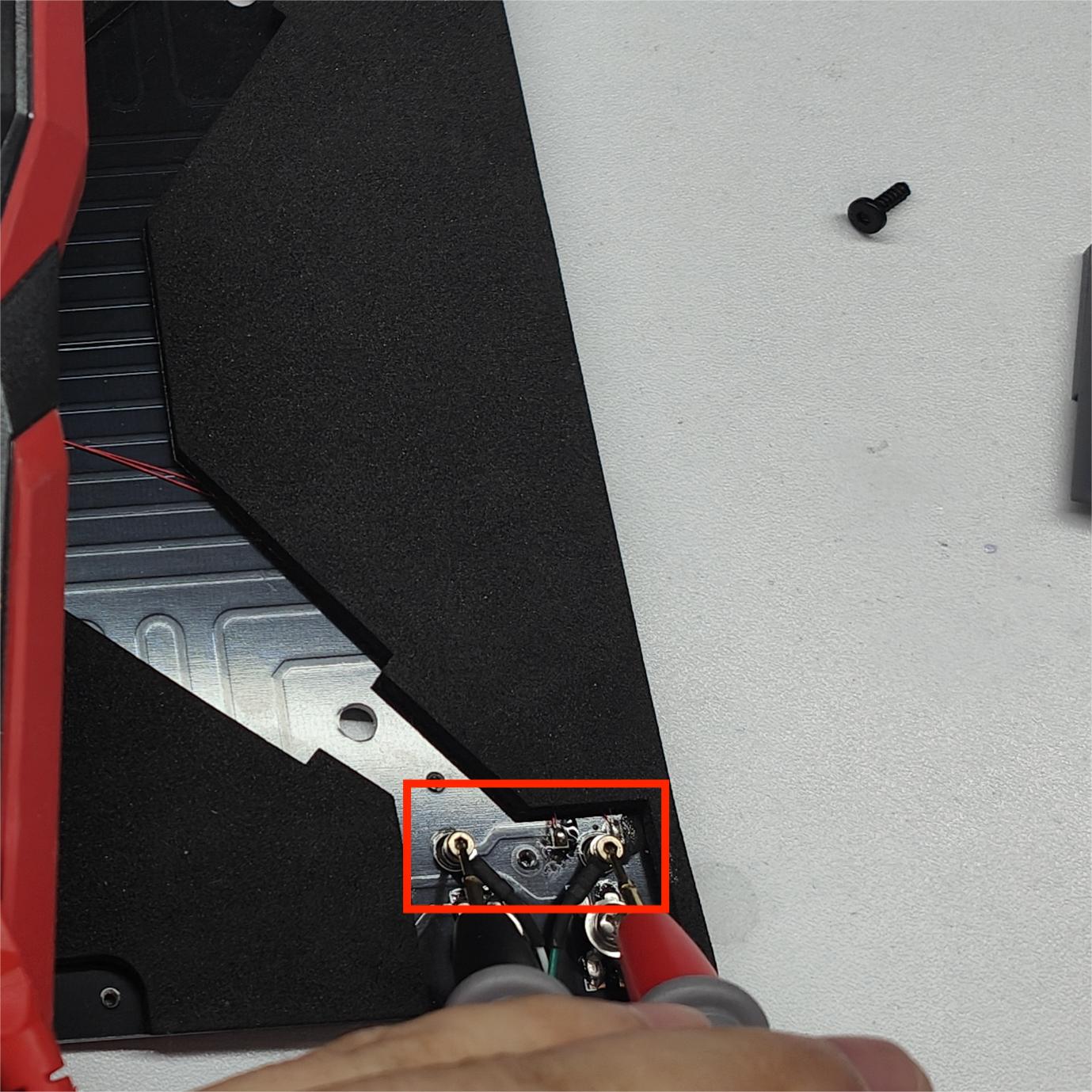
¶ Step 7: Determine if the Bed is Malfunction
If both resistance values mentioned above are normal, it indicates that the entire bed is functioning properly. At this point, it is likely that the issue lies with the heat bed cables.
To further clarify, you can remove the heat bed cables and measure if there is any breakage or discontinuity in the cables.
¶ End Notes
We hope that the detailed guide we shared with you was helpful and informative.
We want to ensure that you can perform it safely and effectively. If you have any concerns or questions regarding the process described in this article, we encourage you to reach out to our friendly customer service team before starting the operation. Our team is always ready to help you and answer any questions you may have.
Click here to open a new ticket in our Support Page.
We will do our best to respond promptly and provide you with the assistance you need.